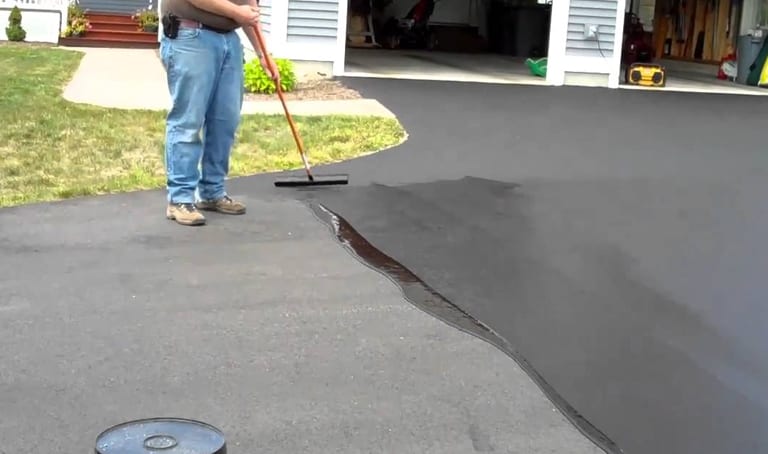Enhance Durability with Cold Mix Asphalt: Expert Sealing Solutions
Enhance Durability with Cold Mix Asphalt: Expert Sealing Solutions
Blog Article
Cold Mix Asphalt Vs. Hot Mix Asphalt: Which Is Right for You?

Make-up Differences
Cold mix and warm mix asphalts vary substantially in their make-up, with distinctive features that influence their efficiency and applications. Cold mix asphalt is produced by emulsifying the asphalt binder with water and an emulsifying representative before blending it with accumulation. This approach enables the asphalt to be workable at lower temperature levels, making it perfect for short-lived repair work and for usage in chillier climate conditions. Hot mix asphalt, on the other hand, is produced at heats, commonly between 300-350 ° F, which aids to achieve better compaction and a more durable end product. The warm mix asphalt manufacturing process involves warming the aggregate and asphalt binder separately prior to integrating them at the asphalt plant.
Additionally, chilly mix asphalt tends to be much less thick and extra adaptable than hot mix asphalt. This flexibility makes it better matched for areas with greater degrees of activity, such as driveways or roadways with rush hour. In comparison, hot mix asphalt is known for its high toughness and resistance to rutting and breaking, making it a preferred selection for freeways and high-traffic roadways where long life is essential.
Installment Process Variances
The procedure of setting up chilly mix and hot mix asphalt exhibits remarkable variations in their demands and treatments. In contrast, hot mix asphalt demands a more elaborate installation procedure. Due to the home heating requirements, warm mix asphalt setups are typically brought out by professionals with customized equipment, making sure an extra structurally audio and permanent outcome.
Sturdiness and Longevity Factors
When taking into consideration asphalt alternatives, durability and long life are important aspects to review for enduring pavement efficiency. Hot mix asphalt (HMA) is understood for its extraordinary durability and long life. The heats during the mixing and laying process enable better compaction, causing a denser and stronger sidewalk structure. This results in HMA being extra immune to rush hour loads, severe climate condition, and the effects of maturing contrasted to cool mix asphalt (CMA)
In regards to durability, HMA generally outperforms CMA due to its premium strength and resistance residential properties. HMA pavements have a longer life span, requiring much less regular repair work and upkeep, which can convert to set you back savings in the lengthy run. In addition, HMA pavements are much more conveniently adjustable to meet details job needs, additionally improving their longevity.
Price Factors To Consider
Thinking about the financial effects is a crucial aspect when assessing the option in between warm mix asphalt (HMA) and chilly mix asphalt (CMA) for pavement tasks. blog While the preliminary price of warm mix asphalt is usually higher than that of chilly mix asphalt, HMA often provides a much more cost-efficient service in the lengthy run due to its superior sturdiness and long life.
Along with material prices, it's necessary to take into consideration the costs linked with setup and maintenance when comparing HMA and CMA. HMA normally needs specialized equipment and competent labor for appropriate setup, which can influence overall project prices. Conversely, CMA is easier to collaborate with and can usually be used using simpler strategies, possibly reducing installation expenditures. Ultimately, the choice in between HMA and CMA should take into consideration not just the initial expense but also the long-lasting economic effects to figure out one of the most economical choice for the particular pavement project.
Environmental Effect Comparison
Comparison of the ecological influences between hot mix asphalt (HMA) and cool mix asphalt (CMA) exposes distinct distinctions in sustainability practices. HMA production calls for high temperatures, leading to raised power intake and greenhouse gas emissions. The procedure also releases unpredictable organic compounds (VOCs) and hazardous air pollutants (HAPs) right into the environment. In contrast, CMA is generated and used at reduced temperature levels, decreasing energy usage and emissions significantly. The lower manufacturing temperatures of CMA result in decreased fuel intake and lower levels of CO2 emissions, making it an extra environmentally pleasant choice.
Furthermore, the usage of CMA often entails reusing existing asphalt sidewalk, promoting resource conservation and decreasing the quantity of waste sent out to garbage dumps. By opting for CMA over HMA, roadway construction projects can add favorably to ecological conservation initiatives.
Final Thought
Finally, the choice between cool mix asphalt (CMA) and hot mix asphalt (HMA) depends upon various variables such as structure, installation procedure, sturdiness, long life, expense, look at here and ecological impact. cold mix asphalt. While CMA provides a fast and cost-efficient remedy for minor repairs, HMA guarantees superior resilience and longevity for rush hour locations. Think about these factors meticulously to figure out which sort of asphalt is the right choice for your paving needs

Considering the monetary effects is an essential facet when you can try here examining the selection in between hot mix asphalt (HMA) and chilly mix asphalt (CMA) for pavement jobs. While the initial expense of warm mix asphalt is normally greater than that of chilly mix asphalt, HMA typically offers a more affordable option in the long run due to its superior longevity and longevity. cold mix asphalt.Contrast of the environmental impacts between hot mix asphalt (HMA) and chilly mix asphalt (CMA) discloses unique distinctions in sustainability practices.In verdict, the option between cool mix asphalt (CMA) and warm mix asphalt (HMA) depends on different variables such as make-up, setup procedure, sturdiness, long life, expense, and ecological impact
Report this page